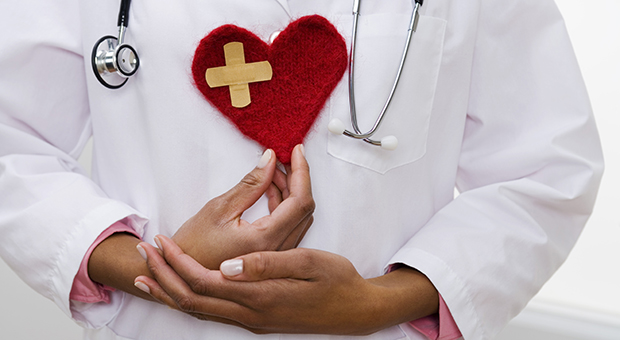The Medical Minute: Pumps and Pacers—A heart device primer

Although pacemakers, pumps and defibrillators aren't exactly new to the heart health scene, today's devices for supporting a strong ticker are smaller, smarter and more widespread than you might think.
For instance, a full two-thirds of patients who receive defibrillators have never gone into cardiac arrest. “They may have been born with conditions or have a family history that puts them at risk,” says Dr. Soraya Samii, heart rhythm disorders specialist. “Both FDA and Medicare have approved them as primary preventative therapy.”
According to Dr. Aly el-Banayosy, head of Penn State Hershey Heart and Vascular Institute's circulatory support program, heart pumps have become significantly smaller over the years. Some may soon be fully implantable.
Here's a look at some of the most common heart devices:
LEFT-VENTRICULAR ASSIST DEVICE (LVAD)
What it does: Sucks blood from the left ventricle and pushes it into the aorta
Who it's for: Patients with end-stage heart failure in need of long-term support and patients awaiting a heart transplant
Advantages: Quality of life improves. Patients no longer experience shortness of breath. They can sleep better and taste their food again.
Challenges: Because the device still connects to an external battery and controller for electrical support, it can be a source of infection. Patients cannot go under water. Patients must go for check-ups each month for the first three months after the device is implanted, then once every three months for life.
Prevalence: Fifty Hershey Medical Center patients live with this pump outside of the hospital. One patient has been living at home with the pump for four years. Worldwide, more than 10,000 patients have been implanted with this pump. About 4,000 are still using it.
PACEMAKER
What it does: Helps the heart beat in a regular rhythm
Who it's for: Those who have – or are at risk for — slow heart rhythms
Advantages: Prevents the heart from beating too slowly or irregularly and helps patients with a slow heartbeat feel better
Challenges: It does not treat dangerous rhythms. Some patients with pacemakers cannot get MRIs. They also need to notify airport security that they have an implanted device. Patients must go for an outpatient surgery to have the battery changed once every seven to 10 years.
Prevalence: In 2009, 190,000 pacemaker surgeries took place in the United States. About 20 percent were likely battery changes.
IMPLANTABLE CARDIOVERTER DEFIBRILLATOR (ICD)
What it does: Detects and terminates dangerous heart rhythms
Who it's for: Those who have – or are at risk for – dangerous heart rhythms and those who survive cardiac arrest.
Advantages: Terminates dangerous rhythms and prevents sudden cardiac arrest.
Challenges: Patients must go for an outpatient surgery to have the battery changed once every five to 10 years. If the device detects a dangerous rhythm and administers a shock, it can hurt. Some patients with defibrillators cannot get MRIs. They also need to notify airport security that they have an implanted device.
Prevalence: In 2009, about 150,000 defibrillator surgeries took place in the United States. About 20 percent were likely generator (battery) changes.
Cardiac Resynchronization Therapy (CRT) device
What it does: Acts like a defibrillator in that it treats dangerous rhythms. Synchronizes both sides of the heart so that they pace together.
Who it's for: Patients with evidence of conduction problems thought to contribute to heart failure
Advantages: By pacing the heart in a more natural way, this device can improve heart function and reduce hospitalizations.
Challenges: Patients with co-existing medical problems such as kidney disease may have complications with this kind of therapy.
Prevalence: Prior to 2000, an individual had to survive a cardiac arrest to get a defibrillator. Patients who are identified as high-risk can now receive a defibrillator before experiencing cardiac arrest.
The Medical Minute is a weekly health news feature brought to you by Penn State Milton S. Hershey Medical Center. Articles feature the expertise of Penn State Hershey faculty physicians and staff and are designed to offer timely, relevant health information of interest to a broad audience.
Next Week: A form of cancer for which many people don't get tested – but they should.
If you're having trouble accessing this content, or would like it in another format, please email Penn State Health Marketing & Communications.
